
Eliminating White Webs on Succulents: A Comprehensive Guide

Succulents have become increasingly popular in recent years, with their unique shapes and vibrant colors adding a touch of beauty to any indoor or outdoor space. However, one common issue that many succulent owners face is the appearance of white webs on their plants. These webs can be unsightly and can also indicate the presence of pests or diseases that can harm the health of the succulent. In order to maintain the beauty and vitality of your succulents, it is important to understand the causes of these white webs and how to effectively eliminate them.
In this comprehensive guide, we will delve into the reasons behind the formation of white webs on succulents. We will explore the most common pests and diseases that can lead to this issue, such as spider mites and mealybugs. Additionally, we will discuss various methods and techniques that can be used to remove these white webs and prevent their recurrence. From natural remedies to chemical treatments, we will provide you with a range of options to choose from. By following our step-by-step instructions, you will be able to restore your succulents to their former beauty and ensure their long-term health.
- Remove the affected leaves or parts of the succulent
- Use a soft brush or cotton swab to gently wipe away the webs
- Apply insecticidal soap or neem oil to control spider mites
- Increase air circulation around the succulent to prevent further infestation
- Avoid overwatering the succulent to prevent fungal growth
- Keep the succulent in a well-lit area to promote healthy growth and discourage pests
- Quarantine any infested plants to prevent the spread of pests
- Regularly inspect the succulent for signs of new webs or pests
- Consider using natural predators, such as ladybugs, to control spider mite populations
- Consult a professional or extension service if the infestation persists or worsens
- Frequently Asked Questions
Remove the affected leaves or parts of the succulent
If you notice white webs on your succulents, it is important to take immediate action to prevent further damage. One effective method is to remove the affected leaves or parts of the succulent. This will help get rid of the webbing and stop the spread of any pests or diseases.
Start by identifying the leaves or areas that have the white webs. These webs are usually a sign of infestation from pests like spider mites or mealybugs. Carefully examine your succulent, paying close attention to the undersides of the leaves and the crevices between them.
Once you have identified the affected areas, use a pair of sterilized pruning shears or scissors to carefully cut off the infested leaves or parts. Make sure to dispose of them properly to prevent any potential reinfestation.
When removing the affected parts, it is important to be gentle and avoid damaging the healthy parts of the succulent. Take your time and make precise cuts to minimize any unnecessary stress on the plant.
After removing the infested leaves or parts, it is crucial to keep an eye on the remaining succulent and monitor for any signs of reinfestation. Regularly inspect the plant and take prompt action if you notice any new white webs or other signs of pests.
 White-Dotted Succulents: Potential Poisonous Effects on Pets
White-Dotted Succulents: Potential Poisonous Effects on PetsUse a soft brush or cotton swab to gently wipe away the webs
If you notice white webs appearing on your succulents, don't panic! This common issue is caused by pests known as spider mites. While they may be tiny, these pests can wreak havoc on your beloved plants if left untreated. However, with some patience and the right approach, you can easily eliminate these white webs and save your succulents.
The first step in dealing with spider mites and their webs is to physically remove them from your plants. Use a soft brush or a cotton swab to gently wipe away the webs. Be careful not to damage the leaves or stems of your succulents while doing so. Remember, spider mites are extremely small, so a thorough inspection is necessary to ensure you remove all traces of their webs.
If wiping the webs away doesn't completely solve the issue, you may need to resort to more intensive methods. One effective approach is to use a strong jet of water to wash away the spider mites and their webs. This method not only removes the visible signs of infestation but also disrupts their lifecycle, reducing their population.
An alternative method is to use insecticidal soap or neem oil, both of which are safe for succulents when used according to the instructions. These solutions can be sprayed onto the affected plants, targeting both the webs and the spider mites. Repeat the application as necessary to fully eradicate the infestation.
Preventing future infestations
After successfully eliminating the white webs on your succulents, it's important to take steps to prevent future infestations. Here are some effective preventive measures:
- Regularly inspect your plants: Keep a close eye on your succulents and check for any signs of spider mites or their webs. Early detection can help you address the issue before it becomes a full-blown infestation.
- Isolate affected plants: If you notice any signs of infestation, separate the affected plants from the healthy ones. This will prevent the pests from spreading and give you better control over the situation.
- Maintain proper plant hygiene: Keep your succulents clean and free from debris. Spider mites are attracted to dusty and unkempt plants, so regularly dusting and cleaning your plants can help deter them.
- Provide adequate airflow: Good air circulation can discourage spider mites from infesting your succulents. Avoid overcrowding your plants and ensure they have enough space for proper ventilation.
- Consider natural predators: Introducing beneficial insects like ladybugs or predatory mites can help control spider mite populations. These insects feed on the pests, keeping their numbers in check.
By following these preventive measures and tackling infestations promptly, you can keep your succulents healthy and spider mite-free. Remember, a little maintenance goes a long way in ensuring the well-being of your plants.
Apply insecticidal soap or neem oil to control spider mites
 Identifying and Treating Root Rot in Succulents: Signs and Options
Identifying and Treating Root Rot in Succulents: Signs and OptionsSpider mites are a common pest that can cause white webs on succulents. To control these pesky creatures, you can apply insecticidal soap or neem oil.
Insecticidal soap is a natural and effective way to eliminate spider mites. It works by suffocating the mites and disrupting their cell membranes. To use insecticidal soap, dilute it according to the instructions on the product label. Then, using a spray bottle, apply the solution to the affected areas of your succulents, making sure to cover both the upper and lower surfaces of the leaves.
Neem oil is another great option for controlling spider mites. It is derived from the neem tree and acts as a natural insecticide and fungicide. To use neem oil, dilute it with water and apply it to your succulents using a spray bottle. Make sure to coat the leaves thoroughly, as spider mites tend to hide in hard-to-reach areas.
Both insecticidal soap and neem oil are safe to use on succulents, but it's always a good idea to test them on a small area of your plant first to ensure there are no adverse reactions. Additionally, it's important to note that these treatments may need to be repeated multiple times to fully eliminate the spider mites and their webs.
If you prefer a more organic approach, you can try using a homemade solution of dish soap and water. Mix a few drops of mild dish soap with water in a spray bottle and apply it to your succulents. This solution works similarly to insecticidal soap by suffocating the spider mites.
Preventive measures
Preventing spider mites from infesting your succulents is crucial to keep those white webs at bay. Here are some preventive measures you can take:
 How to Save a Moldy Succulent: Removing Mold and Restoring Health
How to Save a Moldy Succulent: Removing Mold and Restoring Health- Regularly inspect your plants: Regularly inspect your succulents to catch any signs of spider mites early on. Look for tiny specks on the leaves, webbing, or discoloration.
- Isolate infested plants: If you notice any signs of spider mites on one of your succulents, isolate it from the rest of your plants to prevent the infestation from spreading.
- Maintain proper hygiene: Clean your gardening tools and pots regularly to avoid introducing spider mites to your plants. Also, avoid overcrowding your succulents, as this can create a favorable environment for pests.
- Provide adequate airflow: Spider mites thrive in humid environments, so make sure your succulents have proper airflow to help prevent infestations.
- Water properly: Overwatering can weaken your succulents and make them more susceptible to pests. Water your plants only when the soil is dry, and avoid getting the leaves wet, as this can promote the growth of spider mites.
By following these preventive measures and using insecticidal soap, neem oil, or homemade solutions, you can effectively control spider mites and eliminate those unsightly white webs from your succulents.
Increase air circulation around the succulent to prevent further infestation
If you notice white webs on your succulents, it is a sign that they have been infested with pests. These pests, known as spider mites, can cause significant damage to your plants if not addressed promptly. To eliminate the white webs and protect your succulents, it is crucial to increase air circulation around them.
Spider mites thrive in warm and dry environments, so improving air circulation will create an unfavorable condition for them to survive. Here are some effective ways to increase air circulation around your succulents:
1. Prune Overgrown Foliage
Start by inspecting your succulents for any overgrown or overcrowded foliage. Use sharp and clean pruning shears to carefully remove the excess leaves or stems. By doing so, you will not only enhance air circulation but also promote a more aesthetically pleasing appearance for your succulents.
2. Space Out Your Succulents
If your succulents are planted too closely together, they may restrict airflow, making it easier for spider mites to spread. Consider rearranging your succulents, giving each plant enough space to breathe. This will not only prevent further infestation but also allow your succulents to grow and thrive individually.
3. Use a Fan
Placing a small fan near your succulents can greatly improve air circulation. Set the fan on a low or medium setting and direct the airflow towards the plants. The gentle breeze will discourage spider mites from settling and laying eggs on your succulents' leaves.
4. Avoid Overwatering
Overwatering creates a humid environment that spider mites find favorable. Be sure to water your succulents sparingly and allow the soil to dry out completely between watering sessions. This will help maintain a drier atmosphere around your plants, making it less conducive for spider mite infestations.
 Reviving a Succulent with Root Rot: Best Methods for Recovery
Reviving a Succulent with Root Rot: Best Methods for RecoveryBy taking these measures to increase air circulation, you can effectively eliminate white webs on your succulents and prevent further infestation. Remember to regularly inspect your plants for any signs of pests and promptly address any issues to ensure the health and beauty of your succulents.
Avoid overwatering the succulent to prevent fungal growth
One of the main reasons why white webs appear on succulents is due to fungal growth. Fungi thrive in moist environments, so it is important to avoid overwatering your succulents. These plants have adapted to survive in arid conditions and do not need frequent watering like other houseplants.
To prevent fungal growth, make sure you allow the soil to dry out completely between waterings. Succulents have shallow root systems, so they are more susceptible to rot if they sit in wet soil for too long. Only water your succulents when the top inch of soil feels dry to the touch.
Furthermore, it is essential to use a well-draining soil mix specifically formulated for succulents. This type of soil allows excess water to flow out of the pot quickly, minimizing the risk of fungal growth. Adding perlite or coarse sand to the soil can also improve drainage.
Remember to water your succulents sparingly during the winter months when their growth slows down. Overwatering during this period can lead to root rot and encourage fungal growth, resulting in those pesky white webs.
Ensure proper airflow and ventilation
Fungi thrive in environments with poor airflow and high humidity. Improving airflow around your succulents can help prevent the formation of white webs caused by fungal growth. Here are a few tips:
 Succulent Care: Treating Brown Spots and Disease
Succulent Care: Treating Brown Spots and Disease- Place your succulents in a location with good air circulation, such as near an open window or a fan.
- Avoid crowding your succulents together too closely, as this can restrict airflow.
- Consider using a small fan or a gentle breeze from an open window to promote air movement around your plants.
By ensuring proper airflow and ventilation, you create an environment that is less favorable for fungal growth, reducing the chances of white webs appearing on your succulents.
Treat any existing fungal infections promptly
If you already notice white webs or signs of fungal infection on your succulents, it is crucial to address the issue promptly. Leaving the infection untreated can lead to further damage and potentially kill your plants.
First, isolate the affected succulent to prevent the spread of the fungus to other healthy plants. Next, gently remove any infected leaves or areas using clean and sterilized tools. Be careful not to damage the healthy parts of the plant while doing so.
After removing the infected portions, treat the remaining plant with a suitable fungicide. Follow the instructions on the product label and apply it according to the recommended dosage. Repeat the treatment as necessary until the infection is fully eradicated.
Remember, prevention is always better than cure. By following the guidelines mentioned above, you can significantly reduce the chances of white webs appearing on your succulents due to fungal growth.
Keep the succulent in a well-lit area to promote healthy growth and discourage pests
One of the most common issues that succulent owners encounter is the presence of white webs on their plants. These white webs are typically a sign of infestation by spider mites, tiny pests that can wreak havoc on your succulents if left untreated. In this comprehensive guide, we will explore the various methods you can use to eliminate these white webs and keep your succulents thriving.
 How to Remove White Mold From Succulents: Essential Tips and Tricks
How to Remove White Mold From Succulents: Essential Tips and Tricks1. Identify the Problem
The first step in getting rid of white webs on your succulents is to properly identify the problem. Take a close look at the affected plant and examine the leaves, stems, and other parts for any signs of infestation. Spider mites are tiny, usually less than 1mm in size, and can be difficult to spot with the naked eye. However, you may notice the presence of fine webs, discoloration on the leaves, or even small dots moving around.
2. Isolate Infested Plants
Once you have identified the affected succulent, it's crucial to isolate it from other healthy plants to prevent the infestation from spreading. Place the infested plant in a separate area away from your other succulents until the issue is resolved. This will help contain the problem and protect your other plants.
3. Remove Affected Leaves and Stems
To control the infestation, carefully remove any leaves or stems that show significant signs of damage or are heavily infested with spider mites. Use sharp, clean scissors or pruning shears to make clean cuts and dispose of the affected plant material in a sealed bag. This will help reduce the population of spider mites and prevent further spread.
4. Use Natural Remedies
There are several natural remedies you can use to eliminate spider mites and their white webs on succulents. One effective method is to mix a solution of water and mild dish soap. Spray this solution on the affected plant, focusing on the undersides of the leaves where spider mites tend to hide. The soap will suffocate the pests and help eliminate the white webs.
Another natural remedy is to use a mixture of neem oil and water. Neem oil is a natural insecticide that disrupts the feeding and reproductive processes of spider mites. Mix a few drops of neem oil with water in a spray bottle and apply it to the affected plant. Repeat this process every few days until the infestation is under control.
5. Introduce Beneficial Predators
An alternative method to eliminate spider mites is to introduce their natural predators into your succulent garden. Ladybugs, lacewings, and predatory mites are known to feed on spider mites and can help control their population. You can purchase these beneficial insects online or at your local garden center. Release them near the infested succulent and let them do their job.
Note: It's essential to follow the instructions on the packaging when using any commercial insecticides or introducing beneficial predators to your garden.
 Understanding the Causes of Spider Web-Like Growths in Succulents
Understanding the Causes of Spider Web-Like Growths in Succulents6. Maintain Good Plant Hygiene
To prevent future infestations, it's crucial to maintain good plant hygiene. Regularly inspect your succulents for any signs of pests or diseases and take immediate action if necessary. Keep your plants in a well-lit area with proper air circulation, as healthy succulents are less susceptible to infestation. Avoid overwatering, as excessive moisture can create a favorable environment for pests.
By following these steps and being proactive in your succulent care, you can eliminate white webs caused by spider mites and ensure the health and beauty of your succulent collection.
Quarantine any infested plants to prevent the spread of pests
If you notice white webs on your succulents, it is likely that they are infested with pests such as spider mites or mealybugs. To prevent the infestation from spreading to other plants, it is crucial to quarantine the affected plants immediately.
Creating a separate space for the infested plants will not only protect your other succulents but also allow you to focus on treating the affected ones without any interruptions.
Here are some steps to follow when quarantining infested plants:
- Isolate the affected plants: Move the infested succulents away from other plants and place them in a separate area, preferably in a different room or section of your garden.
- Inspect nearby plants: Carefully examine the surrounding plants for any signs of infestation. If you notice any white webs or other symptoms, it is best to isolate those plants as well.
- Keep the quarantine area clean: Regularly clean the area where you have quarantined the infested plants. Remove any fallen leaves or debris that may harbor pests.
- Monitor the infested plants: Keep a close eye on the quarantined plants to observe their progress. This will help you determine if the treatment methods are effective or if further intervention is needed.
- Wait for treatment: It is essential to wait until you have successfully treated the infested plants before reintroducing them to your other succulents. Rushing the process may lead to reinfestation.
By quarantining infested plants, you can effectively contain the pests and prevent them from spreading to your healthy succulents. Remember to monitor the situation closely and take appropriate measures to eliminate the white webs and protect your entire collection.
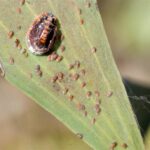 Effective Solutions for Eliminating Mealy Bugs on Succulent Plants
Effective Solutions for Eliminating Mealy Bugs on Succulent PlantsRegularly inspect the succulent for signs of new webs or pests
When it comes to keeping your succulents healthy and vibrant, one of the common challenges you may face is the presence of white webs on the leaves. These webs are often a sign of infestation by pests such as spider mites or mealybugs. To effectively eliminate these pesky white webs and ensure the well-being of your succulents, it is important to regularly inspect your plants for signs of new webs or pests.
Consider using natural predators, such as ladybugs, to control spider mite populations
One effective way to control spider mite populations and eliminate white webs on your succulents is by using natural predators. Ladybugs, also known as lady beetles, are known to be voracious predators of spider mites.
These tiny insects feed on spider mite eggs, larvae, and adults, helping to keep their populations in check. Ladybugs are a natural and environmentally friendly solution for controlling spider mites, as they do not harm your succulents or other beneficial insects.
Here are some steps to consider when using ladybugs as natural predators:
- Identify spider mite infestations: Before introducing ladybugs to your succulents, it's important to confirm the presence of spider mites. Look for the characteristic signs, such as webbing, stippling on the leaves, and tiny specks moving around.
- Purchase ladybugs: Ladybugs can be purchased from garden centers or online stores specializing in beneficial insects. Make sure to buy them from a reputable source to ensure their quality.
- Release ladybugs strategically: Release the ladybugs in the evening or early morning when the temperature is cool. Water your succulents before releasing them, as ladybugs are attracted to moisture. Place the ladybugs near the infested succulents, ensuring they have access to spider mites.
- Provide a suitable habitat: Ladybugs need a favorable environment to thrive and reproduce. Create a suitable habitat for them by incorporating plants that provide pollen and nectar, such as dill, fennel, yarrow, and marigolds. These plants will attract ladybugs and provide them with a food source.
- Avoid using pesticides: Pesticides can harm ladybugs and disrupt their natural predators-prey balance. It's crucial to avoid using chemical pesticides while attempting to control spider mites with ladybugs. Instead, opt for organic methods and natural solutions.
By introducing ladybugs into your succulent garden, you can harness the power of natural predators to control spider mite populations. This eco-friendly approach not only eliminates white webs on your succulents but also promotes a healthy and balanced ecosystem in your garden.
 Understanding the Factors behind Succulent Death Blooms
Understanding the Factors behind Succulent Death BloomsConsult a professional or extension service if the infestation persists or worsens
If you have tried various methods to eliminate the white webs on your succulents but the infestation persists or worsens, it may be time to seek professional help. Consulting a professional or extension service can provide you with expert advice and guidance on how to effectively deal with the issue.
An experienced professional will have in-depth knowledge about succulent pests and diseases. They can accurately identify the specific pest responsible for the white webs and recommend appropriate treatment options. Additionally, they may have access to specialized products or techniques that are not readily available to the general public.
Extension services, often provided by universities or agricultural institutions, offer valuable resources for gardeners and plant enthusiasts. They employ experts who are well-versed in plant health and can provide tailored advice based on your specific situation. They can also conduct tests or analysis to determine the underlying cause of the infestation.
When reaching out to a professional or extension service, make sure to provide them with as much information as possible. Describe the symptoms you are observing, such as the appearance of the white webs, any changes in the plant's health, and the extent of the infestation. This will assist them in making an accurate diagnosis and recommending the most appropriate course of action.
Remember, seeking professional help should be considered a last resort when all other methods have failed. It is important to take proactive measures to prevent future infestations and maintain the overall health of your succulents. Regularly inspect your plants, practice proper watering techniques, and ensure proper air circulation around the plants. These preventive measures can significantly reduce the risk of succulent pests and keep your plants thriving.
Frequently Asked Questions
1. What causes white webs on succulents?
White webs on succulents are typically caused by a common pest called spider mites.
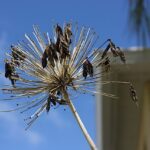 Can a Death Bloom Succulent Be Saved or is it Too Late?
Can a Death Bloom Succulent Be Saved or is it Too Late?2. How do I get rid of spider mites on my succulents?
To eliminate spider mites, you can try using a mixture of water and dish soap to wash them off the leaves, or apply an insecticidal soap or neem oil spray to kill the pests.
3. Can I prevent spider mites from infesting my succulents?
Yes, you can prevent spider mites by regularly inspecting your succulents for signs of infestation, maintaining proper humidity levels, and avoiding overcrowding of plants.
4. Are white webs on succulents harmful to the plants?
Yes, white webs created by spider mites can be harmful to succulents as they feed on the plant's sap, causing damage to the leaves and overall health of the plant.
If you want to read more articles similar to Eliminating White Webs on Succulents: A Comprehensive Guide, you can visit the Pests and Diseases category.

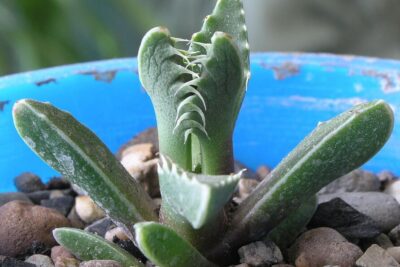

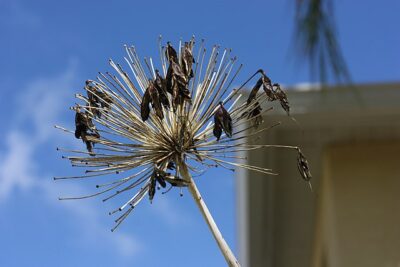
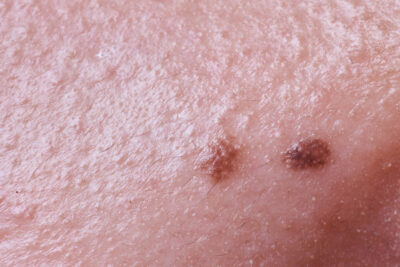
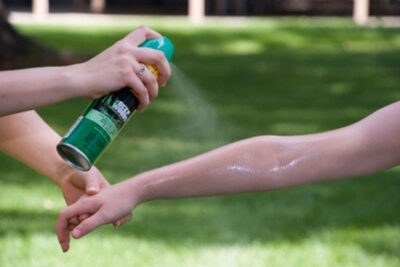
You Must Read